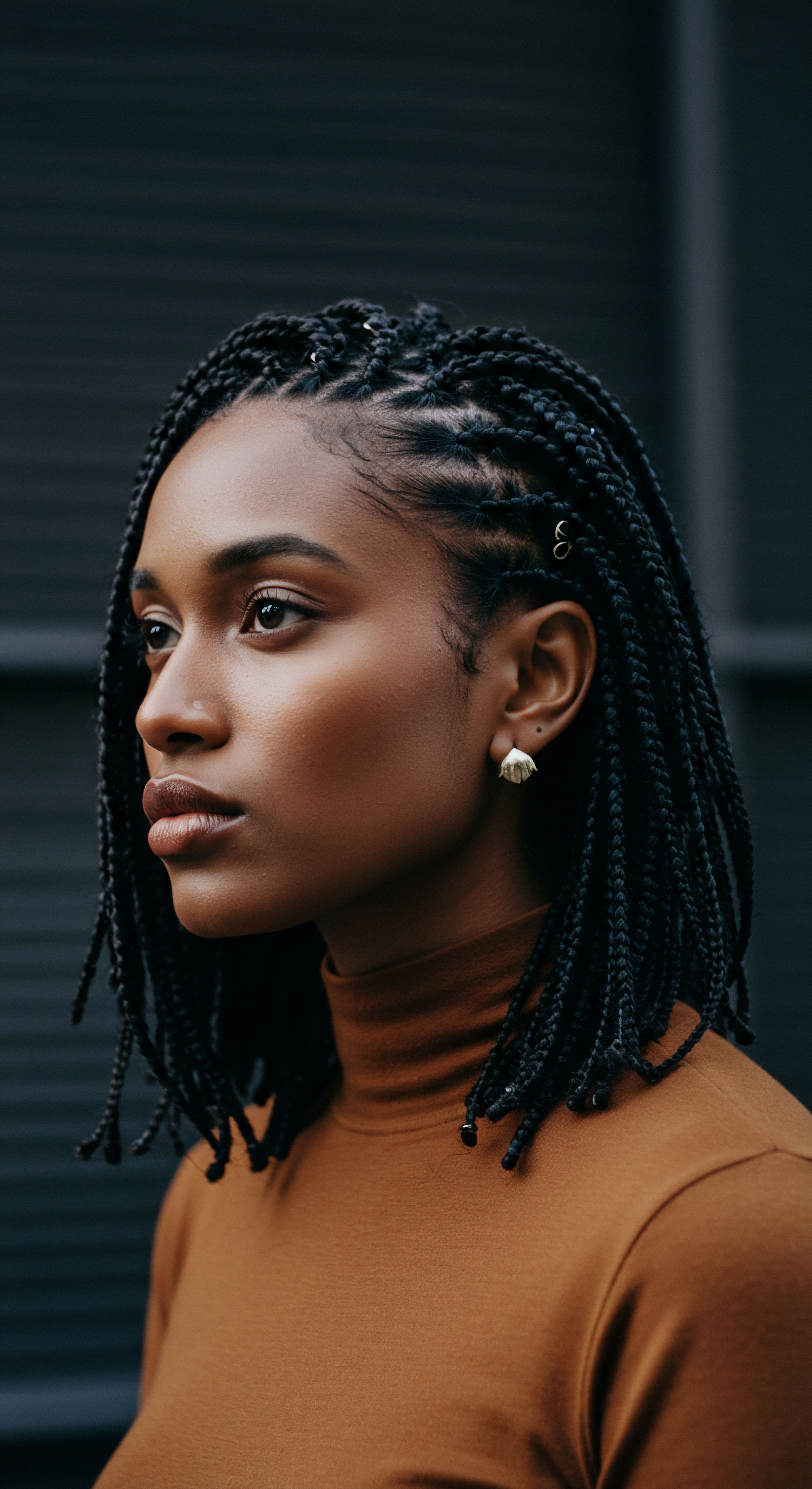
Roots
A quiet unfolding awaits, as we consider the profound connection between traditional African hairstyles and the inherent resilience of textured strands. This exploration reaches beyond mere aesthetics, inviting us to delve into a rich heritage where hair care is deeply entwined with identity, community, and practical wisdom. For generations, these styles have served as a testament to ingenuity, safeguarding delicate hair from the elements and the rigors of daily life. The journey begins not with a product, but with a deeper understanding of the very nature of textured hair itself, a unique biological marvel.
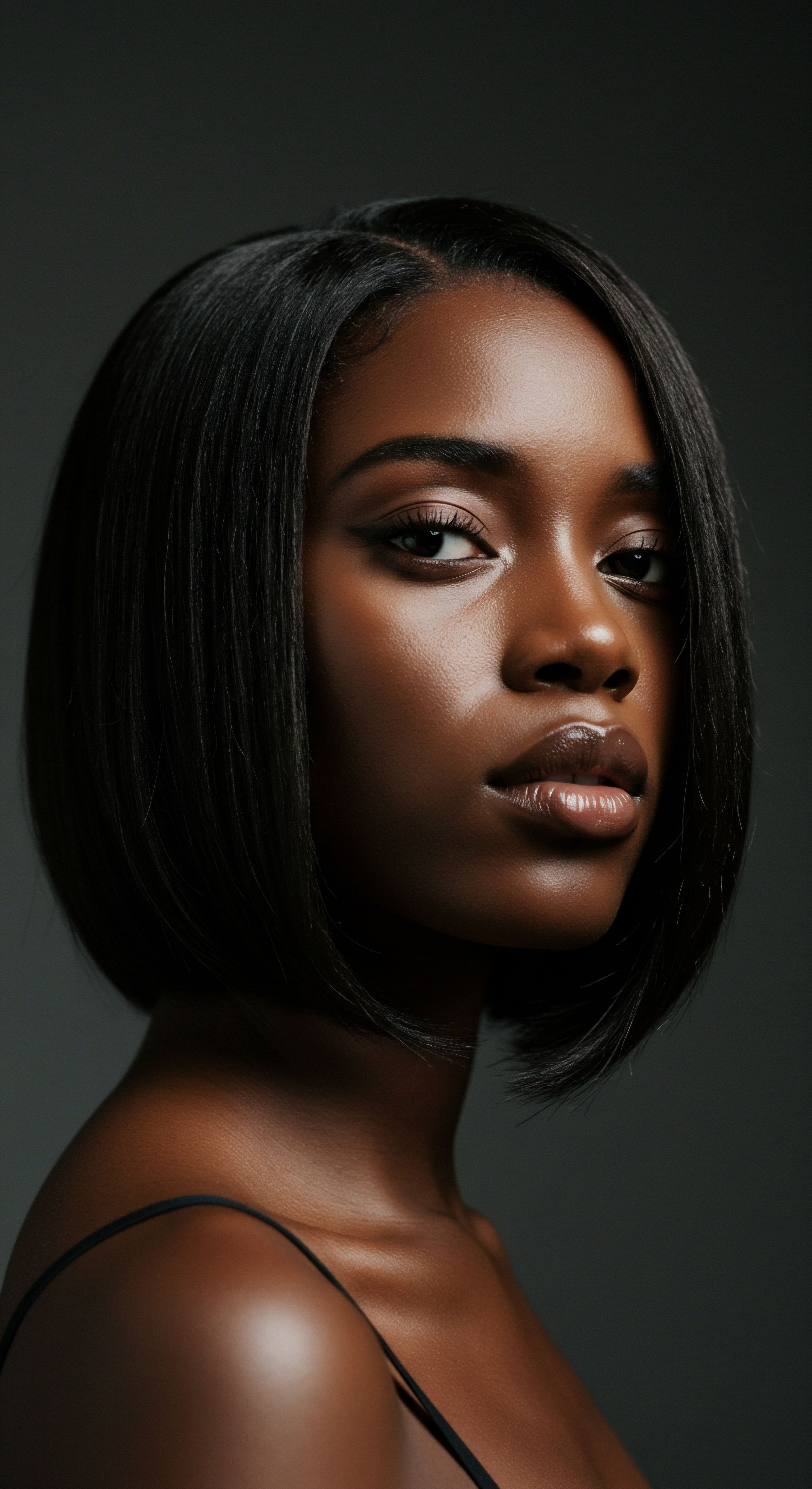
The Architecture of Textured Hair
Textured hair, with its characteristic coils, curls, and kinks, possesses a distinct anatomical blueprint. Unlike straight hair, which tends to be round in cross-section, textured strands often exhibit an elliptical or flattened shape. This unique geometry, coupled with an uneven distribution of keratin proteins within the hair shaft, contributes to its remarkable spring and volume.
However, these same characteristics can also render it more susceptible to breakage. The bends and turns along the hair shaft create points of natural weakness, making it prone to tangling and fracture if not handled with mindful care.
Understanding this underlying structure is paramount. The outermost layer, the cuticle, comprises overlapping scales. In textured hair, these scales may be more lifted, contributing to increased porosity, which refers to the hair’s ability to absorb and retain moisture. While high porosity hair readily absorbs water, it can also lose it just as quickly, leading to dryness and increased susceptibility to damage.

The Ancestral Wisdom of Protection
For millennia, African communities developed sophisticated hair practices that instinctively addressed these unique properties. These practices were not born of modern scientific laboratories, but from generations of observation, experimentation, and a deep reverence for hair as a living crown. They understood that exposing textured hair to constant manipulation, harsh environmental conditions, and excessive tension could compromise its integrity. The solutions they devised were both practical and deeply symbolic.
Traditional African hairstyles are a living testament to generations of ingenuity, safeguarding delicate hair through cultural wisdom and practical application.

A Historical Glimpse into Protective Practices
The history of African hairstyles is as old as civilization itself, with archaeological evidence pointing to intricate styling techniques dating back thousands of years. From ancient Egypt to various West African cultures, hair was a powerful communicator of identity, social status, age, marital status, and spiritual beliefs. Beyond their communicative roles, many of these styles inherently provided protection.
- Braiding ❉ Techniques such as cornrows, box braids, and twists have roots in ancient African societies. These styles involve sectioning hair and interlacing or twisting strands together, often close to the scalp. This technique keeps the hair contained, minimizing exposure to environmental stressors like sun and wind, and significantly reducing daily manipulation.
- Threading ❉ Known as “Irun Kiko” among the Yoruba people of Nigeria, African hair threading involves wrapping sections of hair with thread. This method stretches the hair, helping to retain length and protect it from breakage. It also allows for creative, sculptural styles.
- Headwraps ❉ Beyond their aesthetic and symbolic value, headwraps offered a practical shield for hair, protecting it from dust, sun, and other environmental factors. During the transatlantic slave trade, headwraps also served as acts of defiance and symbols of dignity, reclaiming control over appearance amidst oppression.
| Styling Technique Braids (Cornrows, Box Braids) |
| Primary Protective Mechanism Reduced manipulation, environmental shielding, length retention |
| Historical Context Ancient African civilizations, signifying status and identity |
| Styling Technique Twists (Two-strand, Senegalese) |
| Primary Protective Mechanism Reduced manipulation, moisture retention, less breakage |
| Historical Context Common across African communities for centuries |
| Styling Technique Hair Threading |
| Primary Protective Mechanism Stretching hair, length retention, protection from breakage |
| Historical Context Yoruba people of Nigeria as early as 15th century |
| Styling Technique Headwraps |
| Primary Protective Mechanism Environmental protection, cultural assertion, dignity |
| Historical Context Worn for ceremonies and daily protection in various African cultures |
| Styling Technique These methods highlight a deep understanding of hair health, passed down through generations. |

Ritual
Here, we gently turn our gaze toward the practical wisdom and daily practices that shape our experience of hair care, moving from the foundational understanding to the applied. Traditional African hairstyles, often termed “protective styles” in contemporary discourse, stand as living testaments to an enduring legacy of safeguarding textured strands. These styles are not simply aesthetic choices; they embody a profound, centuries-old ritual of care designed to shield delicate hair from the cumulative stressors of daily life. The wisdom embedded in these practices offers a blueprint for cultivating healthier, more resilient hair.

How Do These Styles Act as a Shield?
The core protective mechanism of traditional African hairstyles lies in their ability to minimize external stressors. Textured hair, with its inherent coil pattern, is naturally more susceptible to mechanical damage and breakage than straighter hair types. The unique shape of textured hair increases tangling, making combing a more challenging endeavor. By securing the hair in braids, twists, or locs, these styles significantly reduce the need for daily manipulation—the combing, brushing, and styling that can lead to friction, tangles, and ultimately, breakage.
Consider the simple act of daily styling. Each pass of a comb or brush, each tug to detangle, exerts stress on the hair shaft. For textured hair, where the cuticle layers may be more lifted, this friction can cause the scales to further lift or chip away, compromising the hair’s protective outer layer.
When hair is secured within a protective style, these instances of friction are drastically reduced, allowing the hair to rest and remain undisturbed. This reduction in manipulation is a cornerstone of length retention, as it directly prevents the loss of hair that would otherwise occur through daily breakage.
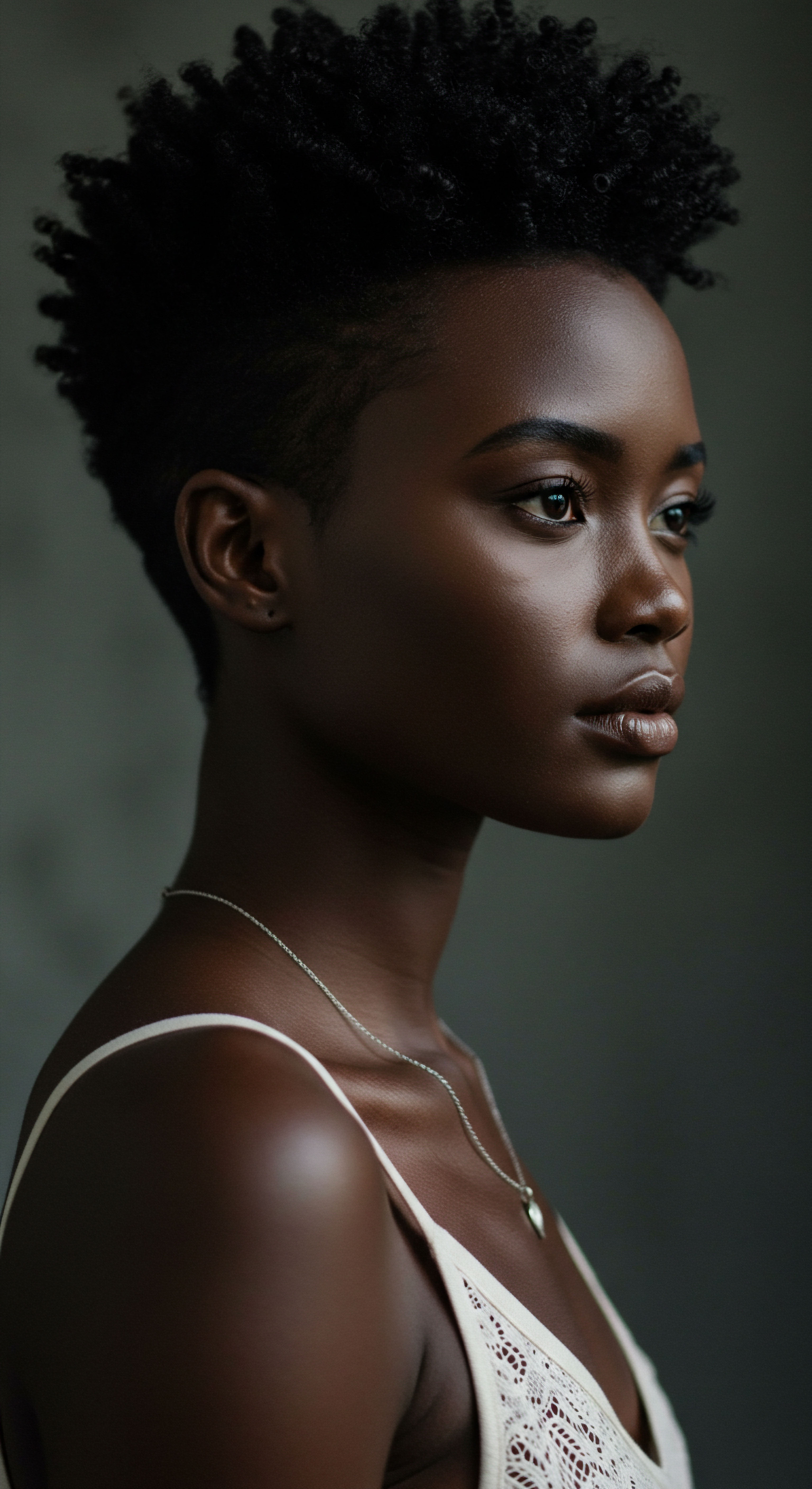
The Preservation of Moisture
Moisture is the lifeblood of textured hair. Due to its structural characteristics, textured hair often experiences higher porosity, meaning it absorbs water quickly but also loses it rapidly. Traditional African hairstyles play a pivotal role in moisture preservation.
By keeping the hair bundled and contained, these styles create a micro-environment that helps to trap moisture within the hair shaft, preventing its rapid evaporation into the surrounding air. This is particularly significant in varying climates where humidity levels fluctuate.
The use of natural emollients and butters, historically applied before or during the styling process, further enhances this protective effect. Ingredients like shea butter, coconut oil, and various plant oils, common in African hair care traditions, create a sealing layer that helps to lock in hydration. This combination of physical protection from the style and lipid-based sealing from natural products creates a powerful defense against dryness and brittleness, conditions that make hair more prone to breakage.

Scalp Care within Traditional Styling
While the focus is often on the strands, a healthy scalp forms the foundation for healthy hair growth. Many traditional African hairstyles, particularly those that section the hair and expose parts of the scalp, allow for direct access to the scalp for cleansing and moisturizing. This contrasts with some modern styling practices that can impede proper scalp hygiene.
Maintaining a clean and balanced scalp environment is essential to prevent issues such as product buildup, dryness, or irritation, which can hinder hair growth and lead to discomfort. The practice of regularly oiling the scalp, a common ritual in many African cultures, provides nourishment to the hair follicles and helps maintain scalp health.
Securing hair in styles like braids or twists minimizes daily manipulation, a critical step in preserving length and preventing breakage.

Does Hair Type Impact Protective Style Benefits?
The benefits of protective styles are universal across textured hair types, though the specific execution may vary. Whether one’s hair exhibits looser curls or tighter coils, the principle of reduced manipulation and environmental shielding remains equally relevant. A 2022 study highlighted that textured hair, regardless of its specific curl pattern, is more prone to mechanical damage due to its helical shape and flattened elliptical cross-section. Protective styles address this inherent fragility by limiting the forces that lead to breakage.
However, it is important to acknowledge that the application of these styles can influence their protective efficacy. Styles that are too tight, especially around the hairline, can cause excessive tension on the hair follicles, potentially leading to a condition known as traction alopecia. This is a critical distinction ❉ the style itself is not inherently damaging, but improper installation or prolonged wear without proper care can undermine its protective intent.
| Hair Health Factor Reduced Breakage |
| Benefit of Protective Styles Significant decrease in hair fracture |
| Mechanism Minimizes daily combing, brushing, and environmental friction |
| Hair Health Factor Moisture Retention |
| Benefit of Protective Styles Improved hydration levels |
| Mechanism Hair is contained, reducing evaporation; aids product absorption |
| Hair Health Factor Length Preservation |
| Benefit of Protective Styles Allows hair to grow without being lost to breakage |
| Mechanism Hair is less exposed to damaging forces |
| Hair Health Factor Scalp Health |
| Benefit of Protective Styles Access for cleansing and moisturizing |
| Mechanism Sections allow direct application of products to scalp |
| Hair Health Factor These styles offer a holistic approach to maintaining the health and vitality of textured hair. |

Relay
The final segment invites a profound inquiry into the less apparent complexities that define the protective qualities of traditional African hairstyles. Here, science, cultural insight, and intricate details converge to offer a multi-dimensional understanding. Beyond the tangible benefits of reduced manipulation and moisture retention, these styles carry a deeper, often overlooked, physiological and psychological weight that contributes to the long-term vitality of textured hair. We explore the interplay of biological resilience, the subtle dance of follicular mechanics, and the profound impact of cultural affirmation on hair health.
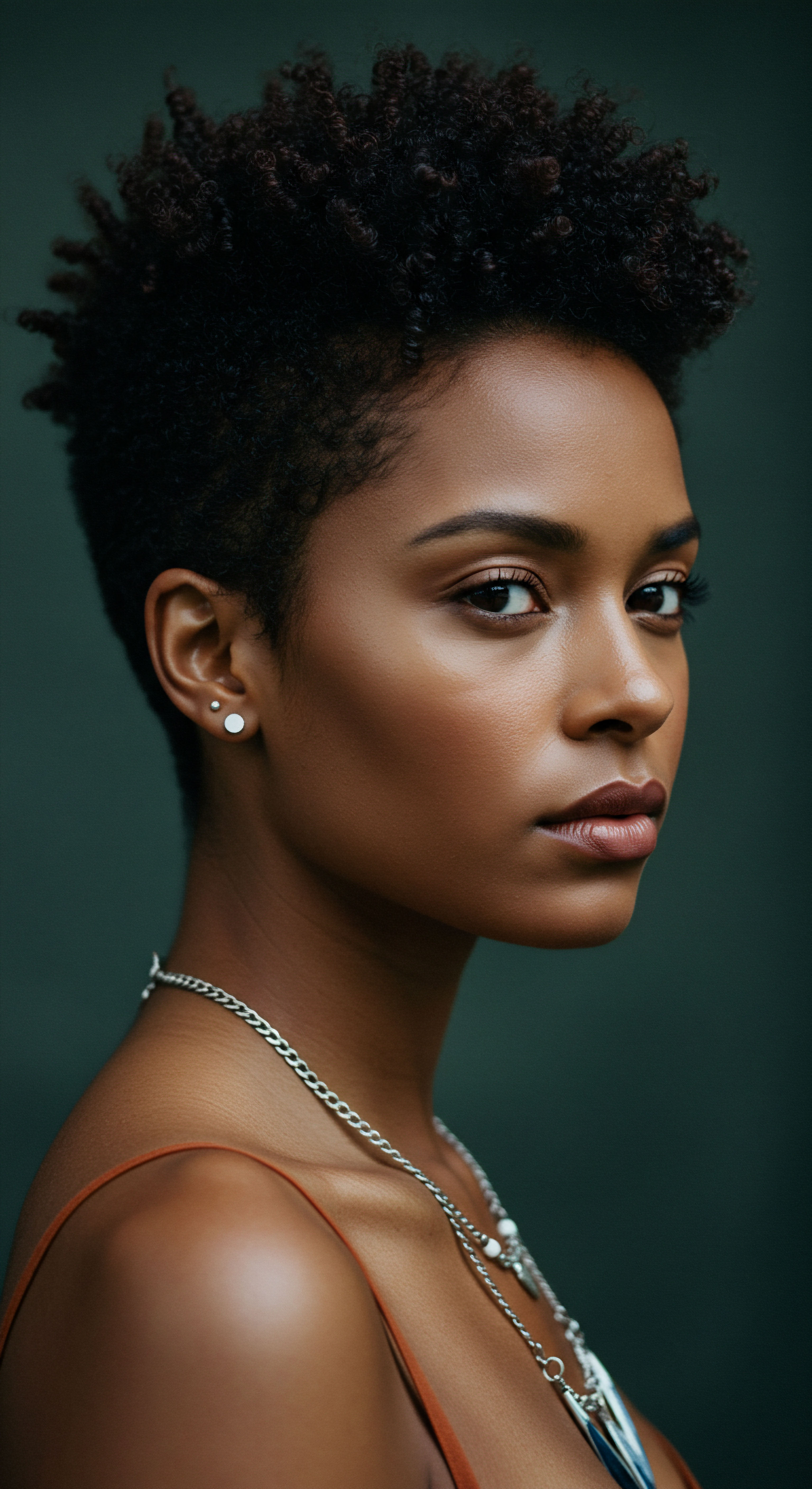
Do Traditional Styles Mitigate Mechanical Fatigue in Textured Hair?
Textured hair, with its helical shape and flattened cross-section, experiences unique mechanical stresses. Unlike straight hair, the coiled structure creates internal points of stress when the hair is stretched or manipulated. A 2020 study on hair breakage in Afro-textured hair revealed that it breaks roughly ten times faster than straighter Caucasian hair across a range of shear stresses experienced during combing or brushing. Furthermore, this research indicated that Afro-textured hair fibers tend to break much earlier in fatigue experiments, and their fragility increases when wet.
This susceptibility to mechanical fatigue means that repeated, low-force stressors, such as daily combing, can cumulatively lead to significant damage over time. This is where the profound protective capacity of traditional African hairstyles becomes evident. By grouping strands into cohesive units—be it a braid, a twist, or a loc—these styles effectively reduce the individual strand’s exposure to direct mechanical forces.
The collective strength of the bundled hair mitigates the localized stress points that would otherwise lead to fracture. This reduction in individual strand fatigue is a critical, yet often under-discussed, physiological benefit.
A cohort study on women from South Africa found a relationship between surface and internal hair fiber damage and braiding frequency. Frequent braiders had thinner hair and more cuticle damage, and their hair fibers were significantly weaker. However, the study also found that cuticle damage from 480 combing strokes was more severe than that from frequent braiding, highlighting the relative benefit of braiding over frequent combing for reducing mechanical stress. This research suggests that while excessive braiding can have its own risks, the alternative of frequent manipulation of loose textured hair can be even more damaging.

The Hormonal and Stress Response Link to Hair Health
Beyond the physical, there exists a less visible, yet potent, connection between hair health and overall well-being, particularly stress. Chronic stress can influence the hair growth cycle, potentially leading to increased shedding. While direct studies linking specific hairstyles to stress hormone reduction are scarce, the cultural and psychological benefits of traditional African hairstyles can indirectly contribute to a healthier hair environment.
Historically, the communal act of hair styling in African societies was a time for bonding, storytelling, and mutual support. This ritualistic aspect fosters a sense of community and reduces feelings of isolation, which are known contributors to stress. In contemporary contexts, embracing traditional styles can serve as a powerful affirmation of identity and cultural pride, especially in environments where Eurocentric beauty standards might otherwise exert pressure.
This psychological uplift, the feeling of self-acceptance and connection to heritage, can contribute to a reduction in stress, indirectly supporting a more balanced hair growth cycle. The act of styling and caring for hair in a way that honors ancestral practices can become a meditative, grounding experience, a quiet rebellion against external pressures.
The communal act of hair styling in African traditions fostered a sense of belonging, reducing stress and indirectly supporting hair health.

What is the Controversy Surrounding “Protective Styles” and Traction Alopecia?
While traditional African hairstyles are celebrated for their protective qualities, a critical discourse exists around the potential for certain applications to cause harm, specifically traction alopecia. This condition, a form of hair loss resulting from prolonged tension on the hair follicles, is a concern. A 2008 cohort study on women and girls in South Africa found that the highest risk of traction alopecia occurred when traction hairstyles were performed on chemically relaxed hair. This suggests that the underlying chemical alteration of the hair, combined with the tension of the style, can exacerbate the risk.
It is important to differentiate between the protective concept of these styles and their improper execution. The issue arises when styles are installed too tightly, when excessive weight from extensions is added, or when styles are left in for extended periods without proper scalp and hair care. A study from North Sudan reported that while improper hair care practices, such as using hair chemicals, were associated with traction alopecia, hairstyling alone was not associated with the condition in their cohort. This nuanced perspective highlights that the problem often lies not with the traditional style itself, but with the techniques of its application and subsequent maintenance.
For example, a study on African American girls aged 5.4 to 14.3 years found signs of traction alopecia in 18% of participants. This statistic, while concerning, must be understood within the context of styling practices and societal pressures. The desire for a particular aesthetic or perceived ease of maintenance can lead to practices that prioritize appearance over follicular health. The key to mitigating this risk lies in education about gentle installation, appropriate tension, and regular scalp care while wearing these styles.
- Tension Regulation ❉ Ensure braids, twists, or locs are not installed too tightly, especially around the hairline and temples. Gentle tension allows for hair growth without stressing the follicle.
- Weight Distribution ❉ When using extensions, select lightweight options and ensure the weight is evenly distributed across the scalp, rather than concentrated on a few follicles.
- Breaks Between Styles ❉ Allow the hair and scalp periods of rest between protective styles, opting for loose, low-manipulation styles or allowing the hair to be free for a time.
- Regular Cleansing and Moisturizing ❉ Maintain a consistent scalp care routine, even when hair is in a protective style, to prevent buildup and keep the scalp hydrated.

The Interplay of Porosity and Protective Styling
Hair porosity, the ability of hair to absorb and retain moisture, plays a significant role in how textured hair responds to protective styles. High porosity hair, which often has a more open cuticle, benefits immensely from protective styles as they help to seal in moisture and prevent rapid water loss. When hair is less exposed to the environment, the moisture applied through conditioners and leave-ins has a greater chance of being retained within the hair shaft.
Conversely, low porosity hair, with its tightly bound cuticles, can sometimes struggle with product penetration. For such hair, gentle heat treatments (like steam) before styling can help open the cuticle, allowing moisture to enter, which can then be sealed in by the protective style. The act of twisting or braiding can also physically compress the cuticle, further aiding in moisture retention for all porosity types.
The strength of bundled hair within traditional styles significantly reduces individual strand fatigue, a crucial physiological benefit for textured hair.
| Hair Porosity Type High Porosity |
| Characteristics Open cuticle, absorbs water quickly, loses moisture quickly |
| Protective Styling Consideration Benefits greatly from styles that seal in moisture; focus on emollients |
| Hair Porosity Type Low Porosity |
| Characteristics Tightly bound cuticle, resists moisture absorption, retains moisture well once hydrated |
| Protective Styling Consideration May benefit from steam before styling to aid moisture penetration; styles help seal |
| Hair Porosity Type Medium Porosity |
| Characteristics Balanced cuticle, absorbs and retains moisture effectively |
| Protective Styling Consideration Generally adaptable to most protective styles with good results |
| Hair Porosity Type Understanding porosity helps tailor care within protective styles for optimal health. |
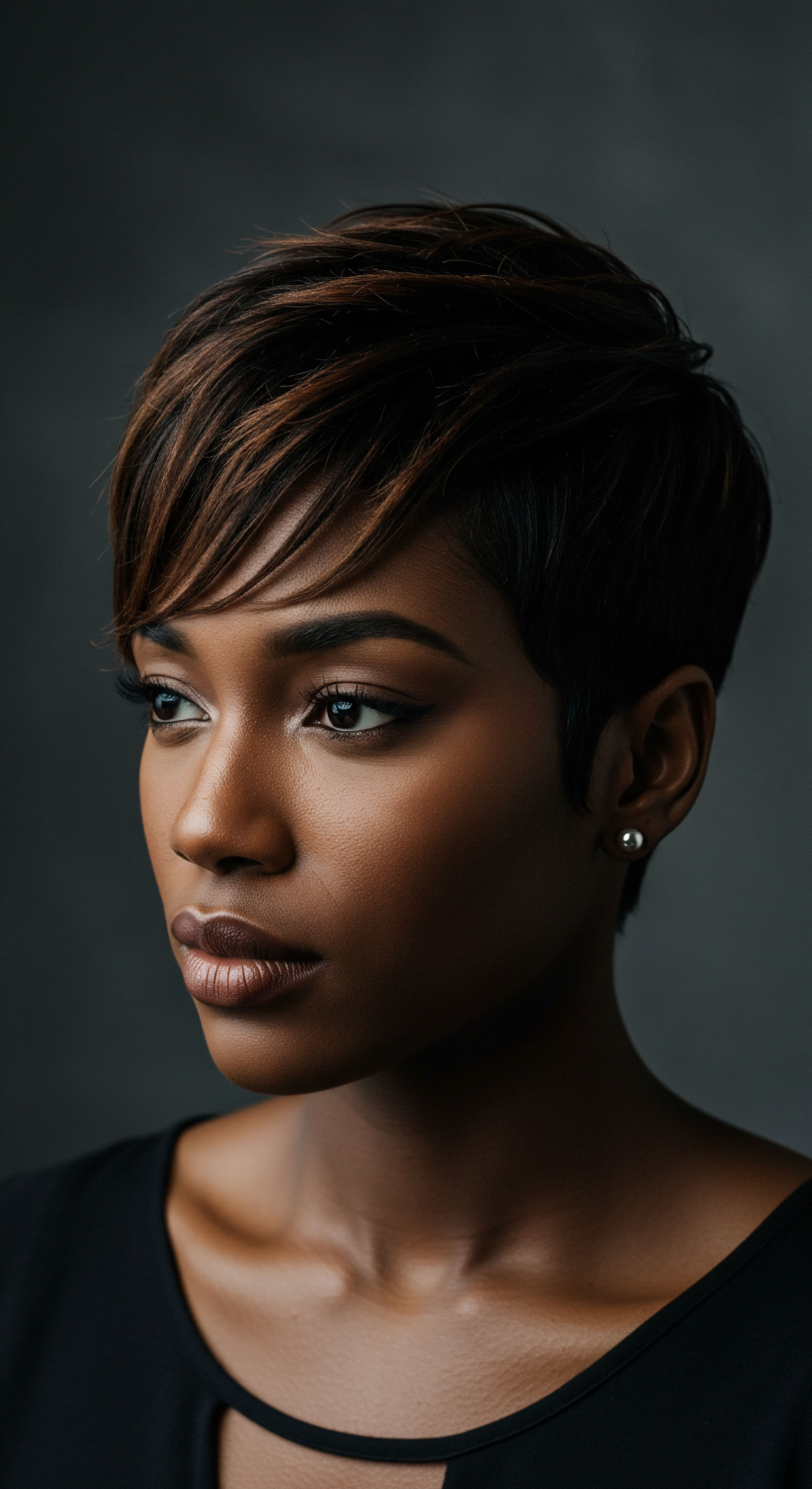
Reflection
The journey through traditional African hairstyles reveals a profound wisdom, a deep connection to heritage, and an enduring understanding of textured hair’s unique needs. These styles are not merely trends; they are a legacy of care, protection, and cultural expression. They stand as a testament to the resilience of hair and spirit, reminding us that true beauty blossoms from a place of understanding and reverence for our natural selves. The gentle strength of a coiled strand, when honored through these ancient practices, speaks volumes of enduring beauty and vitality.

References
- Afriklens. (2024). African Hairstyles ❉ Cultural Significance and Legacy. Retrieved from vertexaisearch.cloud.google.com
- Blackshear, T.B. & Kilmon, K. (2021). Natural hair ❉ A vital component to black women’s health. Journal of Racial and Ethnic Health Disparities, 8(6), 1573–1582.
- Byrd, A. & Tharps, L. (2014). Hair Story ❉ Untangling the Roots of Black Hair in America. St. Martin’s Griffin.
- Dadzie, O. E. & Salam, A. (2015). Hair Care Practices in African-American Patients. Seminars in Cutaneous Medicine and Surgery, 28(2), 103-108.
- Davis-Sivasothy, A. (2011). The Science of Black Hair ❉ A Comprehensive Guide to Textured Hair.
- Gaston, S.A. James-Todd, T. Riley, N.M. Gladney, M.N. & Huebschmann, A.G. (2020). Black Hair Is a Safe Sport Issue! ❉ Black Aesthetics, Access, Inclusion, and Resistance in. International Journal of Environmental Research and Public Health, 17(24), Article 254.
- Khumalo, N. P. et al. (2008). Traction alopecia ❉ the South African perspective. Clinical and Experimental Dermatology, 33(6), 720-724.
- Molamodi, T. et al. (2021). Quantifying the impact of braiding and combing on the integrity of natural African hair. International Journal of Cosmetic Science, 43(3), 321–331.
- Ozkan, E. et al. (2022). Afro-Ethnic Hairstyling Trends, Risks, Recommendations. Cosmetics, 9(1), 16.
- Porter, C. E. et al. (2009). Curly hair ❉ Measured differences and contributions to breakage. Journal of Cosmetic Science, 60(2), 175-188.
- Rele, V. G. & Mohile, R. B. (2002). Effect of mineral oil, sunflower oil, and coconut oil on prevention of hair damage. Journal of Cosmetic Science, 54(2), 175-192.
- Singh, A. et al. (2017). Traction alopecia ❉ A neglected entity in 2017. International Journal of Trichology, 9(3), 101–105.
- Smithsonian National Museum of African American History and Culture. (2023). Strands of Inspiration ❉ Exploring Black Identities through Hair. Retrieved from vertexaisearch.cloud.google.com
- Wimpole Clinic. (2024). High Porosity Hair ❉ The Definitive Guide For Porous Hair. Retrieved from vertexaisearch.cloud.google.com
- Yazdanpanah, F. et al. (2022). Prevalence and Associated Factors of Traction Alopecia in Women in North Sudan ❉ A Community-Based, Cross-Sectional Study. Cosmetics, 9(4), 85.